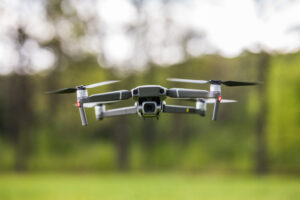Live event coverage is more than documenting an occasion — it’s about capturing energy, emotion, and atmosphere while ensuring audiences experience it as it unfolds. Success relies on balancing production quality with real-time delivery, so both in-person and remote viewers feel equally connected.
The Importance of Real-Time Delivery
Audiences expect immediacy. Whether it’s a corporate seminar or a live concert, real-time coverage allows viewers to participate alongside those attending in person. Achieving this requires low-latency streaming, reliable connections, and a production team that prioritizes uninterrupted access. Learn more about our event filming services that make seamless live coverage possible.
The ability to deliver content without noticeable delay builds trust and strengthens audience engagement. In today’s fast-paced digital environment, this responsiveness often determines how memorable and impactful the event feels.
Maintaining High Production Quality
Quality ensures that events are remembered long after they end. Professional visuals, crisp audio, and smooth transitions elevate the experience. Multi-camera setups and skilled operators add polish, creating a production that feels both immersive and professional. High production standards not only capture the event but also preserve it in a way that can be revisited and shared for years to come. Consistency across visuals and sound ensures the final result reflects the true atmosphere and importance of the occasion.
Core Elements of Live Event Coverage
Live coverage blends multiple technical and creative elements. Skilled event videographers work alongside production teams to ensure every detail is captured with precision. Together, these components ensure the stream is smooth, engaging, and true to the event’s atmosphere.
Camera Work
Varied shots capture context, reactions, and details, giving the audience a complete view. Consistent framing and smooth transitions enhance the storytelling.
Audio Clarity
Balanced sound keeps speeches, music, and interactions clear. Proper mixing ensures both in-person and remote audiences experience the same impact.
Streaming Tools
Modern platforms ensure reliable broadcasting without delays or interruptions. Adaptive technologies adjust quality in real time to match viewer connectivity.
Production Team
Directors, operators, and technicians coordinate every detail to deliver a seamless result. Their collaboration ensures creativity and technical precision work hand in hand.
Balancing Speed and Precision
The heart of live coverage lies in balancing speed with accuracy. Fast switching between angles and instant broadcasting must work alongside careful planning, rehearsals, and technical checks. This preparation allows teams to respond quickly without compromising professionalism. Event videographers also rely on clear communication to coordinate seamlessly during fast-paced moments. When precision and timing align, the audience experiences a broadcast that feels both immediate and refined.
The Role of Technology
Technology underpins every stage of production. High-definition cameras, cloud-based platforms, and real-time editing tools enable coverage that is both polished and immediate. Advancements in automation and connectivity continue to narrow the gap between quality and delivery speed. Event videographers increasingly use integrated software to manage multi-camera feeds and synchronize audio with precision. As these tools evolve, they give production teams greater flexibility to adapt quickly without sacrificing quality.
Key Considerations for Success
Each event brings unique challenges, and success depends on anticipating them. Reliable venue infrastructure, clear audience expectations, and strong backup plans all ensure smooth coverage. By addressing these factors in advance, production teams minimize disruptions and maintain a high standard. Collaboration between event videographers and organizers also plays a vital role in aligning technical needs with the flow of the program. This proactive coordination helps ensure that every key moment is captured and delivered seamlessly.
Balancing Quality and Real-Time Delivery
Balancing quality with immediacy requires prioritizing elements that support both goals. High-definition visuals create a polished feel, while low-latency streaming ensures participation in real time. Audio precision enhances professionalism, while quick signal processing keeps audiences engaged. Together, these details create a broadcast that is both live and memorable.
Looking Ahead: The Future of Coverage
The future of live event production lies in smarter, faster tools. AI-assisted editing, immersive viewing formats, and ultra-low-latency platforms are shaping new standards. These innovations will allow production teams to deliver even higher quality without sacrificing real-time engagement. As technology evolves, the boundaries between live and virtual experiences will continue to blur, creating more interactive opportunities for audiences. This progression ensures that events remain dynamic, inclusive, and unforgettable.
Conclusion
Live event coverage is the art of bringing audiences into the moment while maintaining professional standards. By balancing quality with speed, production teams create experiences that feel immediate and remain memorable. With technology and expertise working together, events are shared with impact, clarity, and precision. At SD Imaging, this balance is at the heart of every production, ensuring audiences feel fully connected whether they are present in the venue or tuning in remotely.
Frequently Asked Questions
1. What makes live event coverage different from regular video production?
It combines professional production values with real-time streaming, unlike standard video that relies on post-editing.
2. Why is real-time delivery important?
It allows remote viewers to participate in the moment, creating shared engagement with the live audience.
3. How do multi-camera setups help coverage?
They provide varied perspectives, making the event more dynamic and ensuring nothing important is missed.
4. Why is audio quality critical?
Clear sound ensures audiences stay connected, as poor audio can distract from even the best visuals.
5. What technologies are shaping the future of live coverage?
AI editing, cloud-based collaboration, and low-latency streaming are driving improvements in both speed and quality.



